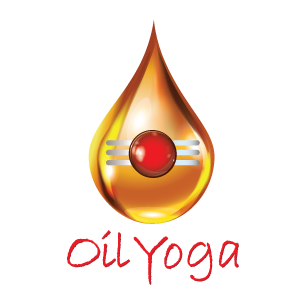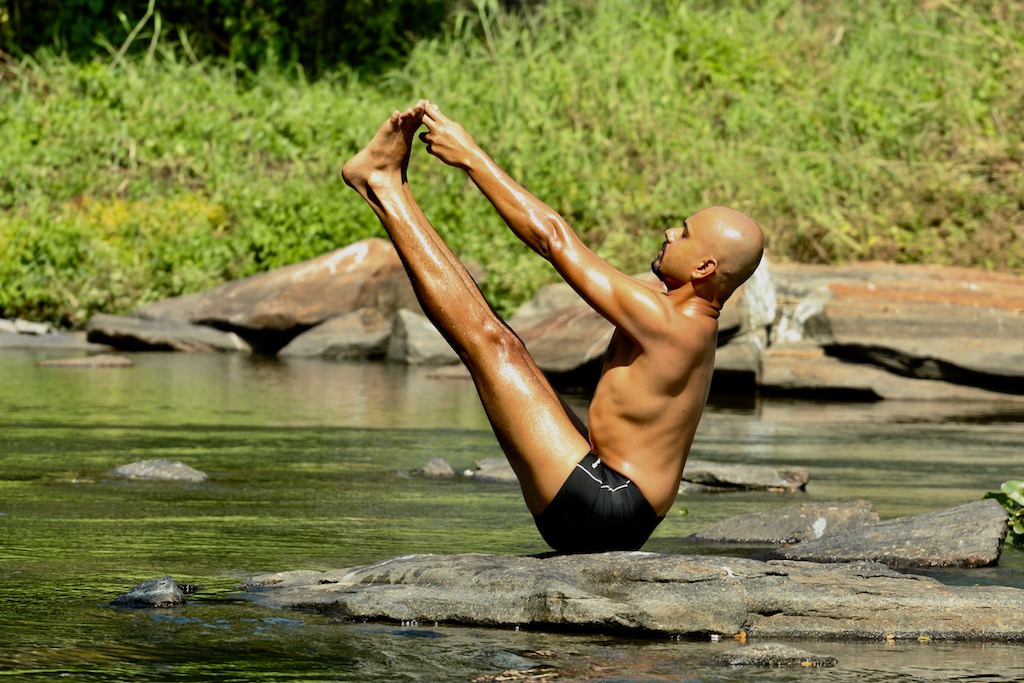Oil Yoga
Entire concept of Oil Yoga made of Dashamasha Padhati
(Ten practice Methodology)
Entire concept of Oil Yoga made of Dashamasha Padhati (Ten Practice part):
- Anushasana Padhati – Methods of disciplining Mind and emotions
- Abhyanga Padhati – Methods of applying the oil to the body
- Asana Padhati – Methods of Asana practice with Vinyasa Paddati (Movement of breath and body)
- Pranayama Padhati – Methods of controlling and expanding Prana
- Dristi Padhati – Methods of focus points
- Bandha Padhati – Methods of practicing the muscular locks
- Kshetra Satkara Padhati – Methods of Respecting the body as an instrument
- Upasana Padhati – Methods invoking the universal energies through Bhakti and Mediation
- Kriya Padhati – Methods Yogic cleansing
- Ahara Padhati – Methods of eating healthy Food
1. Anushasana Padhati
Anusahsana means discipline. The discipline of our five sensory organs (Jnanedrira), (Karmendriya), Mind, Body.
2. Abhyanga Padhati
Applying the oil systematically to the body is called as Abhyanga. Each sequence of Oil Yoga has different methods of applying the oil to the body according to the need of the sequence.
3. Asana Padhati
Asanas are the fundamental aspect of oil yoga. They should be approached from gross level to subtler. Understanding the gravity of mother earth, movement of the joints and muscles, coordination of the breath and mind are very much important to bring the quality such as stability and comfortability. Asanas are placed in a specific order which will provide therapeutic and spiritual benefits with regular practice. In Taila Yoga Asanas are practiced in Vinyasa Pddati which was made popular by Shri Krishnamacharya. Vinyasa Paddati means the method of combining body movement with breath during the performance of asana. Which will be calculated with Sanskrit counts.
4. Pranayama Padhati
Balancing, controlling, channelizing and expanding of our vital energy is called Pranayama. All the animal kingdom utilizes the prana for the basic instincts. Only the human beings are capable of utilizing the prana beyond the basic instincts. Ujjayi breath is mandatory during the Oil yoga practice. Different kinds of pranayama practice will be experienced by the practitioner to get ultimate benefits.
5. Dristi Padhati
To attain focused mind during the asana Drishtis (gazing points) are used. There are different drishtis depending on the asanas:
- Nasagra Dristi: Tip of the nose
- Karagra Dristi: Front of the palm
- Karamoola Drishti: Base of the palm
- Brumadhya Drishti: Eyebrow center
- Antar Drishti: Inward
- Nabhou Drishti: On the naval
- Urdhva Drishti: Upward
- Parshva Drishti: To the side
- Padara Drishti: front of the feet
6. Bandha Padhati
Muscular locks or called ‘Bandha’ in the context yoga. Bandhas are used to store and channelize the Prana. Proper way of practicing bandha is important. Bandhas should be practiced in meditative poses to get mastery. Once the complete understanding of proper practice gained, they can be adopted during the asana practice. During Sneha yoga sequences practitioner will learn proper adopting of the bandhas step by step.
7. Kshetra Satkara Padhati
‘Kshetra’ is the place or seat that is Body and Mind. Sattkara means respecting and reguanating . All of us born with our strengthens and limitation according to our karma. But all of us have been given the freedom to choose the path and nourish our life in a positive way. Respecting and taking care of our body, senses and mind is our foremost duty. Through proper relaxation and understanding the body mind mechanism we have to restore our body regularly.
8. Upasana Padhati
We are made of five elements. Awakening those energies are called Upasana. With mantra chanting and mediation one can attain siddhi over different energies.
9. Kriya Padhati
Yogic cleansing techniques are called as ‘Kriya’. There are six major kriyas:
- Kapalabhati 2. Trataka 3. Neti 4. Dhouti 5. Nouli 6. Basti
Once body is cleansed properly, benefits of Asana and pranayama will be attained in its fullest form. Mind will be controlled at ease and mediation happens naturally.
10. Ahara Padhati
Following good habit have been given lot of importance in yogic life style. As it is rightly said “what we eat we become that”. Excess usage of spices, salt and oil will not bring desired result in yogic path. Food should support our Asana and pranayama practice.


